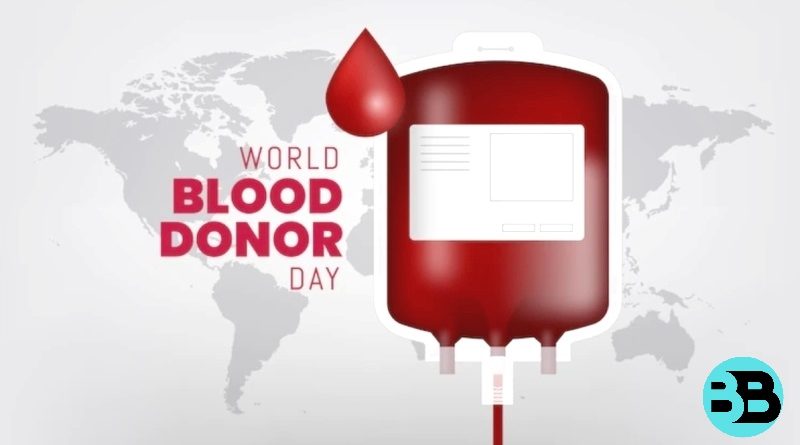World Blood Donor Day – Promoting Lifesaving Generosity
World Blood Donor Day (WBDD) is observed annually on June 14th to raise awareness about the importance of blood donation and to acknowledge the remarkable contributions of voluntary blood donors worldwide. This day serves as a platform to celebrate the selfless act of donating blood and to encourage individuals to become regular blood donors. Since its inception in 2004, WBDD has gained significant global recognition, emphasizing the critical role blood donation plays in saving lives and improving the health of millions of people.
The Significance of World Blood Donor Day
- Purpose and objectives of WBDD: This section explores the primary objectives of WBDD, such as highlighting the need for safe blood and blood products, promoting voluntary unpaid blood donation, and expressing gratitude to voluntary donors worldwide.
- The global impact of blood donation: Discuss the critical role blood donation plays in healthcare systems worldwide. Highlight the significance of blood transfusions in emergencies, surgeries, and the treatment of various medical conditions.
- Blood shortages and challenges: Address the challenges faced in maintaining an adequate and safe blood supply globally. Explore factors such as limited availability, lack of awareness, misconceptions, and the impact of the COVID-19 pandemic on blood donation.
The Journey of Blood Donation
- Pre-donation procedures: Explain the necessary steps involved in preparing for blood donation, including donor eligibility criteria, health screening, and informed consent. Discuss the importance of ensuring donor safety and the confidentiality of personal health information.
- Blood collection process: Describe the different methods of blood collection, including whole blood donation, apheresis, and component separation. Highlight the significance of aseptic techniques, donor comfort, and proper storage and transportation of donated blood.
- Laboratory testing and blood processing: Discuss the laboratory procedures involved in testing donated blood for infectious diseases, blood typing, and cross-matching. Explain the process of separating blood into different components like red blood cells, platelets, and plasma to maximize its therapeutic potential.
Ensuring a Safe Blood Supply
- Donor screening and selection: Discuss the importance of rigorous donor screening to prevent the transmission of infectious diseases through donated blood. Highlight the criteria for donor deferral and the impact of various factors, such as travel history, medical conditions, and lifestyle choices.
- Testing and quality assurance: Explain the laboratory testing methods used to ensure the safety and quality of donated blood. Discuss the significance of nucleic acid testing (NAT) for detecting infectious agents and the importance of continuous quality assurance programs.
- Blood banking and storage: Address the principles of blood banking, including proper storage conditions, shelf life, and inventory management. Discuss the role of blood banks in maintaining a constant supply of different blood types and managing emergencies and disasters.
Encouraging Blood Donation
- Raising awareness: Discuss the importance of education and awareness campaigns to dispel misconceptions about blood donation and motivate more people to become regular donors. Highlight the role of media, social networks, and community engagement in promoting blood donation.
- Enhancing donor experience: Explore strategies to improve the donor experience, such as convenient donation facilities, shorter waiting times, comfortable environments, and recognition of donors’ contributions.
- Voluntary donation initiatives: Showcase successful voluntary blood donation initiatives implemented by governments, non-governmental organizations, and corporate entities. Highlight the impact of motivational programs, donor recognition, and incentives in encouraging regular blood donation.
The Way Forward
- Policy and legislation: Emphasize the need for governments to establish comprehensive policies and legislation that support voluntary blood donation and ensure the safety and availability of blood and blood products. Discuss the importance of regulatory frameworks, national blood transfusion services, and partnerships with relevant stakeholders.
- International collaboration: Highlight the significance of global collaboration and sharing best practices in blood donation. Discuss initiatives such as the World Health Organization’s (WHO) Global Database on Blood Safety and the International Federation of Red Cross and Red Crescent Societies’ (IFRC) efforts in promoting safe and sufficient blood supplies globally.
- Harnessing technology: Explore the role of technology in enhancing blood donation practices, such as online donor registration systems, mobile applications for appointment scheduling, and electronic health records for streamlined donor management. Discuss the potential of emerging technologies like blockchain for enhancing transparency and traceability in the blood supply chain.
Recognizing Blood Donors
- Donor appreciation: Discuss the importance of recognizing and appreciating blood donors for their invaluable contributions. Highlight initiatives such as donor certificates, commemorative events, and social media campaigns to express gratitude and raise awareness about the impact of blood donation.
- Voluntary donor organizations: Shed light on the role of voluntary donor organizations, such as the Red Cross and other blood donor associations, in promoting blood donation, organizing donor drives, and providing ongoing support to donors. Discuss the importance of their role in ensuring a steady supply of safe blood.
- Personal stories: Share inspiring stories of blood donors and recipients to illustrate the profound impact of blood donation on individuals and communities. Highlight the transformative power of generosity and compassion.
Conclusion
World Blood Donor Day serves as a powerful reminder of the critical role that blood donors play in saving lives and improving the health of people worldwide. By promoting voluntary unpaid blood donation, raising awareness about the importance of a safe blood supply, and recognizing the selfless contributions of donors, this annual observance contributes to building stronger and more resilient healthcare systems.
However, the need for safe blood remains a global challenge. Governments, healthcare institutions, and communities must continue their efforts to overcome barriers and ensure a sufficient and secure supply of blood. Through robust policies, international collaboration, technological advancements, and ongoing donor engagement, we can further strengthen the foundation of blood donation and guarantee its availability in times of need.
On World Blood Donor Day, let us celebrate the remarkable generosity of blood donors, honor their contributions, and inspire more individuals to embrace this lifesaving act. Together, we can make a significant difference in the lives of countless people, reinforcing the spirit of compassion and solidarity that defines our shared humanity.
Read also:
World Blood Donor Day





